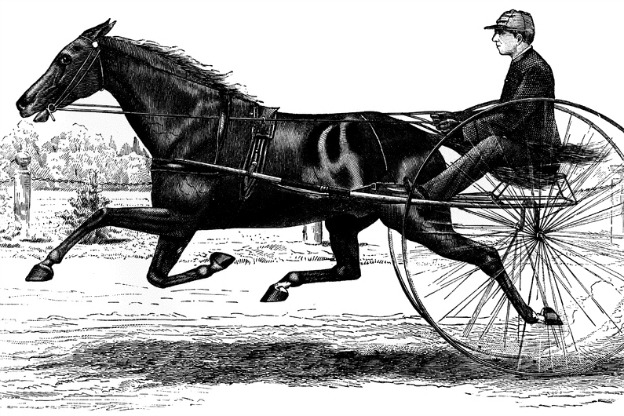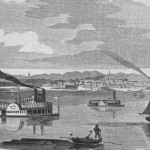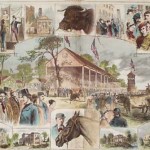Indiana storytellers seem to enjoy attributing the name of their state, as well as the names of some of their towns, to a particular type of tall tale. The term “Hoosier” is still often attributed to a pioneer settler standing in his field in front of a log cabin and calling out “Who’s here?” to a passing traveler. In similar fashion, the name of the northern Indiana city of Hobart is attached, via local legend, to a traveler and his horse. In this case, a group of townspeople is gathered in front of the general store when a man in a horse-and-buggy stops in front of the store and calls “Ho, Bart!” to his animal.
The story of the name of Hobart, Indiana, is indeed linked to the early history of Indiana, but has nothing to do with the fictional traveler. In the 1830s, as the federal and state government forced out the Potawatomi and Miami Indians who lived in northern Indiana, white settlers began to come into the area and plat out towns on the acquired land. One such town was Liverpool, Indiana, settled by immigrant Englishman George Earle and his family. Town lots went up for sale in mid-1836 and investors raised $16,000 from the land sales. Liverpool vied to become the county seat of the young Lake County and even built a courthouse in anticipation of a favorable outcome, but lost out to the town of Lake Court House (renamed Crown Point).
Without the business and growth that accrued to a county seat, Liverpool stagnated. Its courthouse, as a later historian reported, was “sold and floated down the Calumet to be used as a tavern at Blue Island, Illinois.” The Earle family moved a few miles southeast and founded a new town, named for George Earle’s brother, Hobart. And so the Calumet region of Indiana acquired a town name Hobart, without the assistance of a horse named Bart.
Sources: Ronald L. Baker and Marvin Carmony, Indiana Place Names (1975); Benjamin Cohen, “Lake County Before the Railroad Era,” Indiana Magazine of History 32, June 1936.
A Moment of Indiana History is a production of WFIU Public Radio in partnership with the Indiana Public Broadcasting Stations. Research support comes from Indiana Magazine of History published by the Indiana University Department of History.























